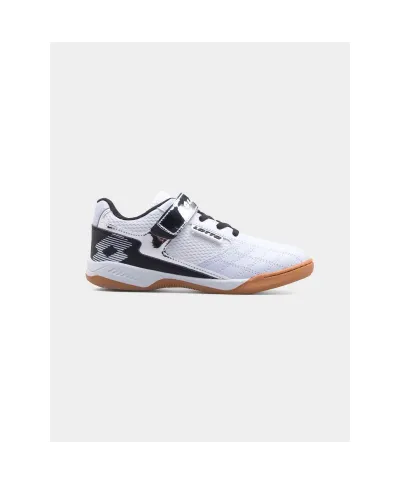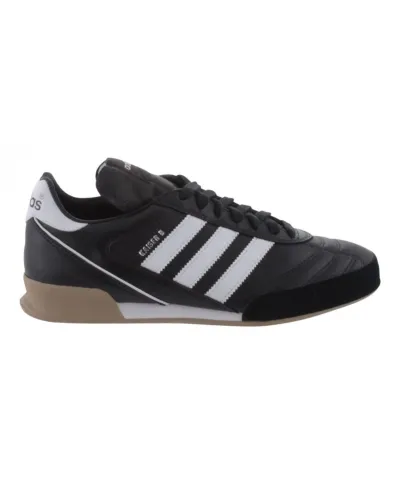1. Why Is Choosing the Right Indoor Shoes So Important?
Indoor sports shoes are not just an element of your outfit - they are a tool that affects your performance and health. Poorly selected footwear can lead to injuries, foot pain and even spine problems. Here are some reasons why choosing the right indoor shoes is important:
Safety - shoes with the right grip minimize the risk of slipping on the smooth surface of the hall.
Comfort - well-chosen shoes provide comfort even during long training sessions or intense matches.
Efficiency - proper cushioning and foot support can affect better sports results, improving agility and reaction speed.
2. Key Features of Indoor Shoes
When buying indoor shoes, it is worth paying attention to several key features that will have a direct impact on their functionality and comfort. Here is what you should pay attention to:
A. Indoor Shoes Sole
The sole is one of the most important elements that determines the shoe's grip on the surface. Good indoor shoes should have non-marking soles that provide adequate grip on smooth and slippery indoor surfaces. It is worth paying attention to anti-slip technology and appropriate treads.
B. Cushioning and Foot Support
In sports halls, where dynamic movements and quick changes of direction dominate, shoes must provide adequate cushioning. Indoor shoes, such as indoor football shoes or volleyball shoes, use various technologies that absorb shock and minimize the load on the joints. Models with additional cushioning in the heel or midfoot can prevent injuries and improve comfort.
C. Ventilation
Although indoor shoes are used in closed rooms, intense exercise means that feet can quickly overheat. Well-ventilated indoor shoes allow the feet to breathe and prevent excessive sweating, which affects comfort during long training sessions.
D. Fit and Ankle Support
Foot and ankle stability is key to avoiding injuries. Depending on the sport, additional support may be needed – for example, volleyball shoes often have a higher profile, which stabilizes the ankle, while indoor football shoes may be more low-profile, for better freedom of movement.
3. How to Choose Indoor Shoes for Different Disciplines?
Each sport has its own specific footwear requirements, so it is worth paying attention to the differences between shoes for different indoor sports.
A. Indoor Football Shoes
Playing indoor football requires shoes with very good grip, which allow for dynamic changes of direction, fast sprints and sudden stops. Indoor football shoes have a low sole, ensuring close contact with the ground, which gives better control over the ball. Adequate durability is also an important element, as contact with the ball and the hard surface of the hall can quickly destroy less resistant models.
Examples of technologies used in indoor football shoes:
Controlskin – improves the ball's grip on the shoe.
Non-marking sole – a special non-marking sole.
B. Volleyball Shoes
Foot and ankle stabilization is important in volleyball, especially during jumps and landings. Volleyball shoes usually have a higher profile, which provides additional ankle support. It is also important for shoes to be lightweight, which allows for quick movement on the court. Good cushioning in the heel and midfoot areas prevents joint overload.
Technologies used in volleyball shoes:
Gel cushioning - a system of gel cushions that absorb shocks.
Trusstic System - provides stability and prevents excessive twisting of the foot.
C. Basketball Shoes
Basketball is a sport that requires not only good grip, but also ankle support during intense jumps and sudden changes of direction. Basketball shoes usually have high uppers that stabilize the ankle, and a thicker sole, providing better cushioning.
4. What to Look for When Buying Indoor Shoes in the Winter Season?
Buying indoor shoes for the winter season is a little different to buying shoes for the rest of the year. Winter indoor training means you don’t have to worry about the weather, but there are a few extra things to consider:
Storage: Shoes can be exposed to changes in temperature during the winter, so it’s worth making sure you store your shoes properly. Avoid leaving your indoor shoes in cold rooms, as this can affect their structure.
Insulation: Although indoor training doesn’t require special materials for insulation, it’s worth making sure your shoes have adequate ventilation, especially if you’re training at an intense pace.
Material selection: Indoor shoes made from synthetic materials can handle moisture and sweat better, which is important in closed, warm rooms.
5. Common Mistakes When Choosing Indoor Shoes
When choosing indoor shoes, it is easy to make a few mistakes that can negatively affect the comfort and efficiency of your workout. Here are the most common mistakes you should avoid:
Too tight shoes: Choosing shoes that are too tight can cause chafing and discomfort. It is worth trying on shoes with the right sports socks to make sure they fit perfectly.
Ignoring cushioning: In indoor sports that require frequent jumping and sudden movements, proper cushioning is key to avoiding injuries.
Incorrect size: Feet can swell slightly during intense exercise, so it is important that shoes are not too small. Always try on shoes in the evening, when feet are more tired and may be a bit bigger.
Choosing the right indoor shoes is an investment in your health, comfort and better sports performance. Depending on the discipline, it is worth paying attention to specific features of the footwear, such as cushioning, ankle stabilization or sole grip. Well-chosen indoor football boots, volleyball shoes or other indoor sports shoes will allow you to enjoy the game, minimizing the risk of injury and maximizing performance.
Remember that winter is a time when we often move training to halls, so choosing the right footwear for this season is crucial. It is worth choosing proven brands that offer footwear specially designed for dynamic indoor sports, adapted to the specifics of various disciplines.
In this way, you will ensure comfort, safety and full freedom of movement, enjoying sports throughout the winter season.










